Do you have Japanese ancestors you are looking for? Are you wondering where to look for family records, or do you want to add to what you already have? Fortunately, a number of records are available at FamilySearch.org as well as elsewhere.
A Brief History of Japan
To understand the types of records found in Japan, it helps to spend some time learning about the history and culture of this beautiful land of mountains, sea coasts, and ancient temples and shrines. Japan has had a long history of peace and warfare and a thriving artistic culture that developed over the centuries.
Originally, Japan consisted of several small kingdoms. However, it started unifying during the Kofun Period, between AD 250 and 538. Buddhism was introduced in Japan during the 6th century, joining Shintoism as a dominant religion in the area.
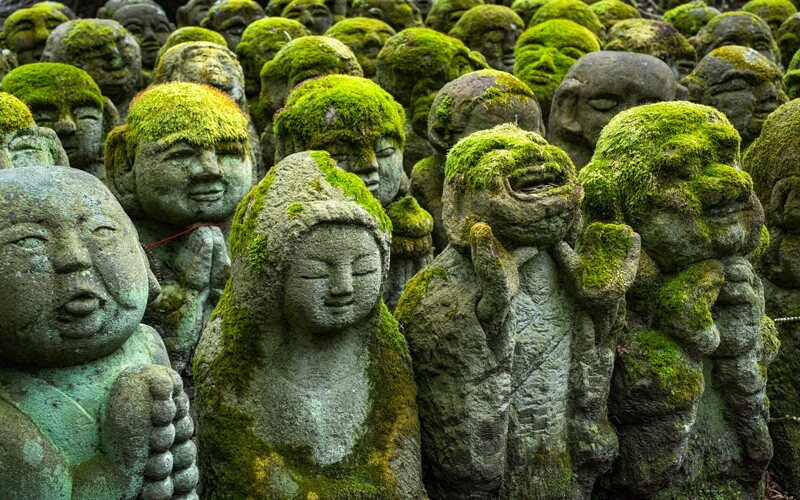
For many centuries, emperors governed Japan. During the 1100s, the samurai and shoguns took control of the country and ruled for the next several centuries. It was during this time that the shogunate system of government was put into place. Although the shogunate was the head of the country’s power, the Japanese emperor remained as a figurehead until the Onin War in 1467, which caused the country to break apart. It was reunited in 1590 by Toyotomi Hideyoshi, the second “Great Unifier” of Japan after Oda Nobunaga.
The Western world began influencing Japan’s culture in the 1540s, when Portuguese traders and Catholic Jesuit missionaries arrived and introduced the Japanese to firearms and Christianity. This influence was limited during the Edo Period, from 1603 to 1868, as a policy of isolationism was enforced. Japan’s involvement with the rest of the world began once again in 1853, when Admiral Oliver Perry of the United States and his naval fleet opened Japan to trade.
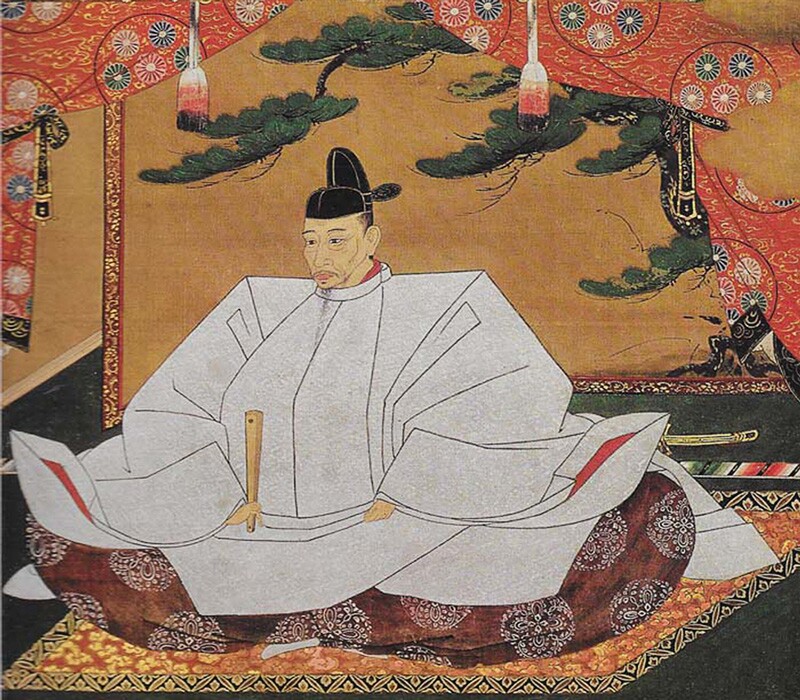
During the Meiji Restoration of 1868, Japan began incorporating more Western ideals. The country moved from an agrarian society to an industrialized one; its constitution, government, and army were reformed; and the emperor was reinstated, ending the era of shogunates. During this time, around 1875, the government required citizens to begin using surnames. In Japan, the surname is traditionally listed first, although when written in English, the given name is usually written first.
Where to Start Searching for Japanese Records
The easiest place to begin learning about your ancestors is your family members; ask them what they know! Some families have scrolls or artwork with family names on them; check if there are any in your family. For example, Takuji Nagano* from Japan says his family has a scroll going back more than 40 generations that gave him names and a place to start learning about his family.
In addition to your compiled family information, koseki, kakocho, and shumoncho are three main sources for Japanese research.

Koseki (Household Registers)
Koseki are household registers for Japanese families that contain multiple records in one document, including births, deaths, marriages, adoptions, and divorces. The registers are most often kept in the village or city where the family originated at the time of marriage and includes only the names of Japanese citizens. Most koseki began during the 1870s, when it became a government requirement.
There are two main types of koseki. A koseki tohon is a record of all family members, with births, death, and marriages. A koseki shohon is the record of just one person, with parents’ names, date and place of birth, and sex.
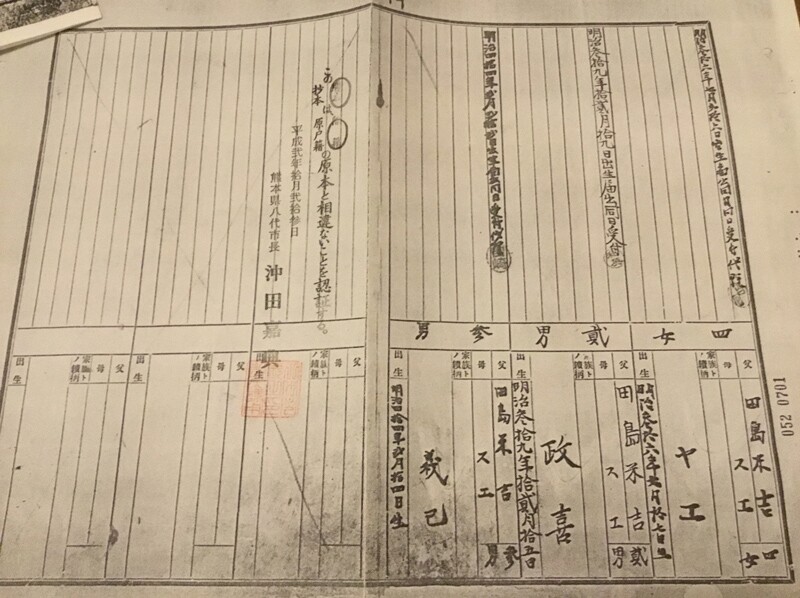
Finding your family’s koseki is an important step in discovering your Japanese ancestors. To find your family’s koseki, look at the village records where your family originated. Keep in mind that you can get the koseki records only for direct ancestors. If you have relatives living in Japan, have them help you get copies of available records. Otherwise, you will have to write and request the records from the different prefectures where your family lived in Japan.
Kakocho (Buddhist Death Registers)
Kakocho, a word that means “book of the past,” are Buddhist death registers. When a person dies, a Buddhist priest assigns him a ceremonial name, which he records in the kakocho.
The kakocho usually includes the name of the person, the posthumous name given by the Buddhist monk, and the death date. It also sometimes includes family relationships and other information. When you look for your relative’s kakocho, be sure to see if other family names are listed for that temple. Some kakocho records go back to the 7th century AD. To find your family’s kakocho, check the area where your oldest ancestor lived for the nearest Buddhist temple or shrine.
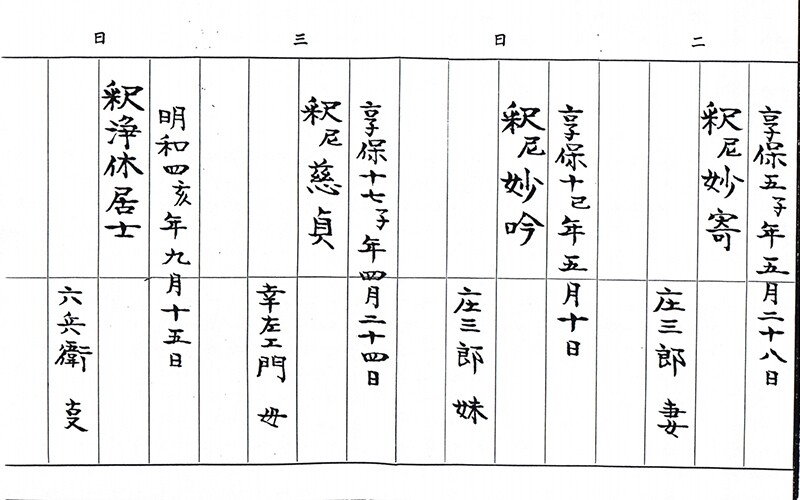
Shumoncho (Examination of Religion Register)
Shumoncho records were periodic censuses to identify people according to their religion, mostly during the period between 1640 and the 1870s. The public was required to register with the local Buddhist temple or Shinto shrine to enforce Japan’s ban of Christianity.
Along with religious affiliation, shumoncho records also include the status of the local families as farmers, artisans, merchants, and outcasts. They do not count samurai or court nobles or include last names.
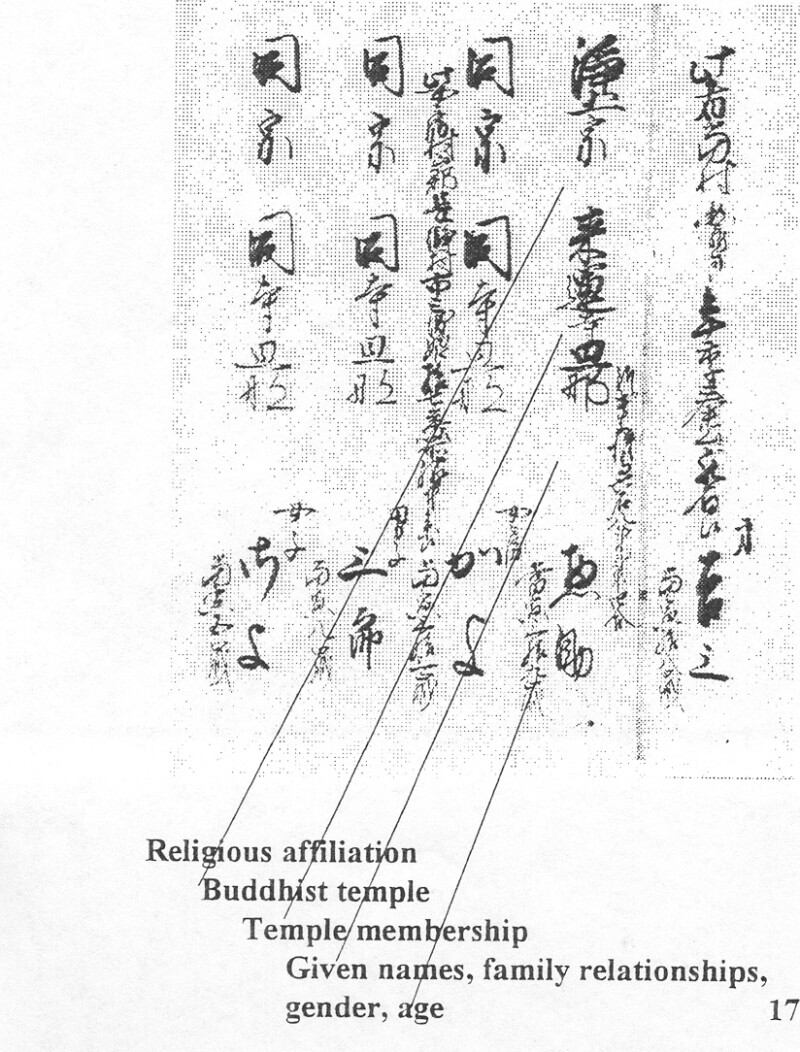
While the record types and accessibility vary, are scattered, and cover only a portion of the population, they can help you find information about a family household, including names, relationships, age at the time of the census, sect affiliation, family temple location, and property and tax information. Some of these records may be available online at FamilySearch.org or on microfilm at the Family History Library, or you can check with local village offices.
Some Helpful Hints
- Although many records have not been translated or digitized, a large number have been translated and may be recorded in both Japanese and English.
- Records are available on microfilm at the Family History Library. Be aware that they may be written in Old Japanese and may require translation.
- Some records may have been lost due to wars and natural disasters, or village governments may keep paper records only for a certain number of years. Check with your family’s ancestral villages to learn what records may be available.
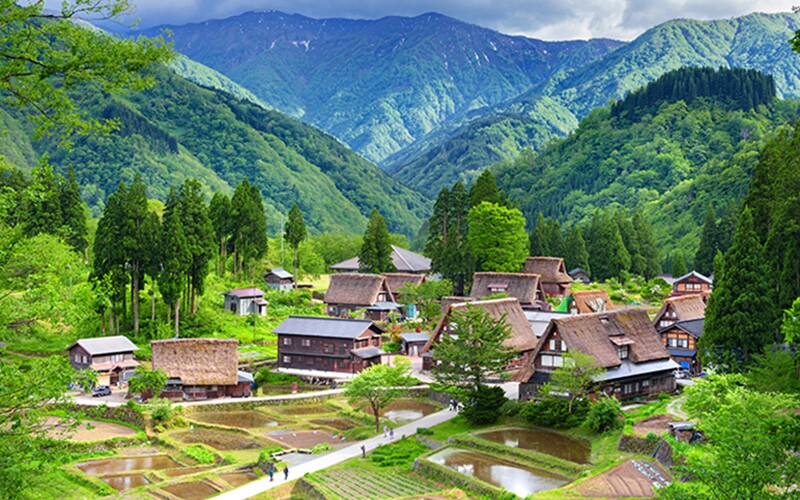
- To access family records, you need to know the area where your ancestors came from. Surnames given in the 1800s may give you a clue to where to start looking for your ancestors because many families used locations for their surnames.
- Search cemeteries for your ancestors’ gravestones, and record the information you find on them.
- The FamilySearch Research Wiki has a number of resources, tips, and strategies to help you learn about the different types of Japanese records. Included in the wiki are tools to help with names, word lists, naming conventions, and maps.
Additional Resources to find Japanese Ancestors
The FamilySearch wiki has information and a collection of additional records that include the following:
- Online genealogy records
- Immigration and emigration records
- Genealogies
- Military records
- Village records
- The Japan GenWeb page, Ancestry.com and Cyndi’s List also contain records and resources to help you locate your ancestors.
- The FamilySearch Where Am I From? feature can give you additional insight into where your ancestors lived during important world events, and it allows you to trace family lines across the world. Try using this feature together with Google Maps to see photos of your family’s homeland.
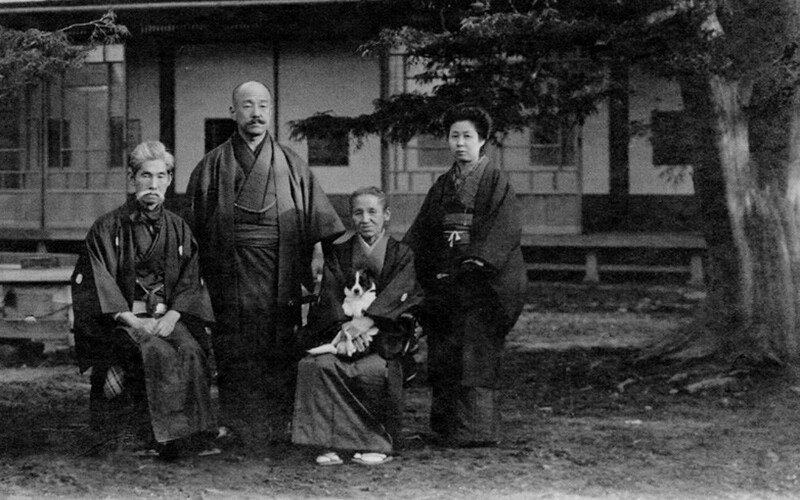
As you take time to learn about your Japanese ancestry, take time to learn more about the history and culture that impacted your family members. Be sure to document and share what you find on your ancestor’s FamilySearch profile and in FamilySearch Memories to help your ancestors’ stories come alive.
*From a phone interview with Takuji Nagano, who helped with information on Japanese records.

